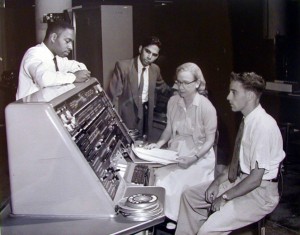
 Need a invention that will lower, even eliminate our dependence on oil? Look to a woman. According to the 2011 Lemelson-MIT Invention Index, which measures Americans’ perceptions on inventing and innovations, women ages 16-25 “indicate they are creative, the characteristic they most associate with inventors,” yet less than 27 percent consider themselves inventive. In fact, men are more likely (36%) to view themselves as inventors, even though they believe they are less creative (66%).
Need a invention that will lower, even eliminate our dependence on oil? Look to a woman. According to the 2011 Lemelson-MIT Invention Index, which measures Americans’ perceptions on inventing and innovations, women ages 16-25 “indicate they are creative, the characteristic they most associate with inventors,” yet less than 27 percent consider themselves inventive. In fact, men are more likely (36%) to view themselves as inventors, even though they believe they are less creative (66%).
The breakdown in women pursuing a career in research appears in the college years. The Lemelson-MIT Invention Index shows that42 percent of female respondents rate math and science as their favorite subjects compared to 53 percent of males who took the survey. “Recent statistics show while more women are entering college and obtaining degrees, less than ten percent earn them in technical majors such as computer and information sciences, engineering or math,” according to the U.S. Department of Education.
It’s time to make a change.
What the Lemelson-MIT Invention Index revealed is that nearly half of women respondents were interested in pursuing a life of research to help others. Just over one-third of men felt the same affinity. More were interested in “consumer products or web-based inventions.”
So if we want to improve our lives – we need to look to our daughters and there is history to back this up.
Stephanie Louise Kwolek was pushy and maybe even had the reputation of being a know-it-all. That may have been how she found herself assigned to a project that other chemists declined. Hired in 1946 by DuPont, and assigned to the project in 1964, she and the team would endure failure after failure in an effort to find a lightweight fiber strong enough to be used for tires.
Eventually, her digilence paid off, according to the Smithsonian, “Her experiments yielded a solution unlike any she’d ever seen. While most polymer solutions were thick and clear, like syrup, this was thin and hazy-looking. Its milky texture made the technician nervous about putting the solution into the fiber-making machine, called a spinneret. He thought there probably were solid particles that would clog up the spinneret’s fine holes. But Kwolek convinced him that the solution was safe to spin, and the resulting fibers were exceptionally strong–much stronger than steel, in fact.”
By 1971, her discovery would be marketed by the brand name Kevlar (five times stronger than steel!) and be used “to manufacture ropes, bridge cables, tapes, and bullet-proof vests, among many other applications. It is also used, as per her assignment from DuPont, to reinforce radial tires.”
Women invented the windshield wiper, vacuum ice cream freezer, the dishwasher, the circular saw, the CPR mannequin, the telephone switching system, a noise reduction system, a method for deflecting smokestack emissions, the bra, and a communication system that transmitted unbreakable code during WWII just to name a few.
Here are some other great sites about Women Inventors:

